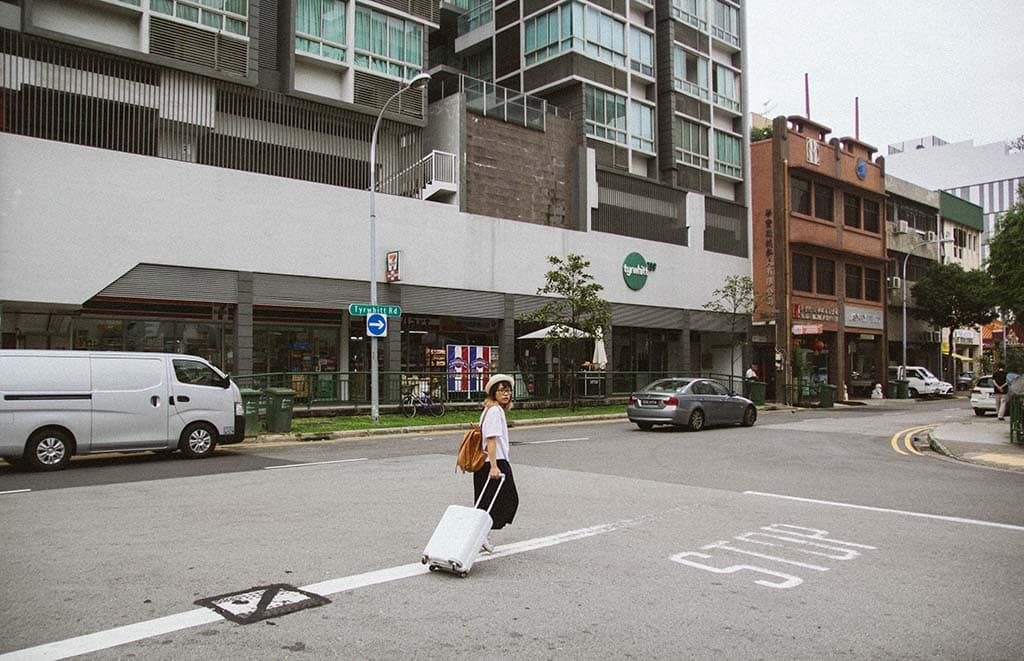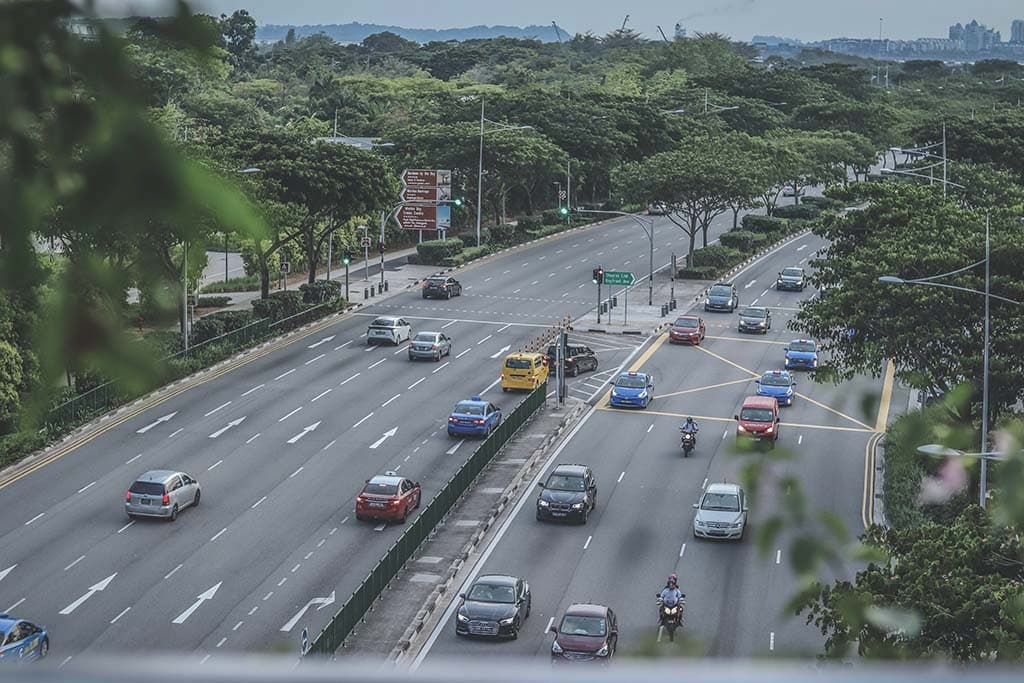Singapore is not ashamed to say that it’s doing everything it can to get personal cars off the streets for the sake of a shared happy future. Today, let’s take a look at the tools with which the city of millions wants to beat traffic jams.
By 2040, 9 out of 10 people in rush hour should be moving around the city not in a personal car. That means on foot, by bicycle, by bus, subway, cab or balloon, but not by their car. The time of any trip within the city should be no more than 45 minutes. To achieve these goals, they build compact neighborhoods, bicycle lanes, subways, make dedicated parking lots, and so on.
The whole world has played with cars since the last century: cities have moved away from trying to keep up with the increase in the number of cars to control the use of the car. While one hand makes public transport and sidewalks convenient, the other hand imposes prices for parking and car travel. In Singapore, similar systems have been in place since the 1970s, when traffic jams got to everyone.
Today in Singapore there are three tools to control your desire to buy or drive a car:
1) ERP – the toll road system;
2) COE – license to buy a car;
3) GLIDE – intelligent flow management systems.
ERP
This is a toll road system. The system has been in place since the 1970s, and has gone from paper passes with manual checks at checkpoints to digital remote reading. The price of the toll varies depending on the load on the streets in a particular area and the type of vehicle. There are three price ratios: personal cars, cabs and light trucks – 1 PCU, motorcycles and mopeds – 0.5 PCU, heavy trucks 1.5 PCU and buses 2 PCU. In other words, if at a certain point the ERP zone entrance fee is $1, motorcyclists pay $0.5 and bus companies pay $2. Also, the price changes during school vacations. Also read about 4.7 Dodge engine problems here.
The maximum and minimum price in each zone is reviewed every three months based on street utilization: if the average speed is consistently high, the price goes down, if it is low, the price goes up. This is done to redistribute traffic on the streets: you can take a short small road at a higher price and save time, or take a detour and a little cheaper.
COE
You can’t just pick up and buy a car in Singapore. The license to buy a car was introduced by the local Deptrans (Land Transportation Authority) in 1990 in response to a surge in the number of cars. Licenses are auctioned off and the document itself is issued for a specific car for 10 years. It is forbidden to resell the license, as well as forbidden to re-register the car to another owner who does not have his own license.
In addition, a car in Singapore is much more expensive than in New York: sales tax, registration fee, regular and progressive customs duty are added to the price. Added to this is the road tax for different engine displacements, parking, license plate issuance price, annual insurance, store commission and various special taxes. The only exceptions are for special services and military vehicles.
GLIDE
It’s complicated and simple: it is an intelligent transportation system. The computer analyzes data from the streets and decides on the optimal phasing at the level of the intersection, the district and the entire city. To do this, it uses embedded sensors. The system takes into account pedestrians, there are intersections with priority passage of buses.
The system is self-contained, but allows operators to manually adjust the green wave remotely, and emergency services also have access. For example, near fire stations, traffic lights can be configured to allow special vehicles to pass. The city also has a warning screen system for various incidents and a free evacuation service.

Street Design
This is what streets in historic districts of Singapore usually look like: a cute development with active first floors, narrow sidewalks, porches and parking. Here, they decided to remove the parking. For starters, they use tactical urbanism to make different public spaces in place of car spaces. Through each pole hangs a notice of the work and an apology for the inconvenience.
The solutions are quick, simple and inexpensive. But these incomprehensible constructions will help to understand if the conceived things work – it is necessary to avoid mistakes in the major reconstruction of the street.
As a rule, before such projects, they collect data on street users and their number, involve businesses and test the theory. If after temporary changes no significant improvements happened, then everything is removed and tried elsewhere, and if everything worked and everyone is happy – begin to do a major project. Swing in front of the bar, why not? Too bad I didn’t make it here in the evening.
The unloading places are marked separately. Such a story! And guess what? There’s almost no traffic here! Singapore has pleasantly surprised with its mature transportation policy! Others should follow its example!


